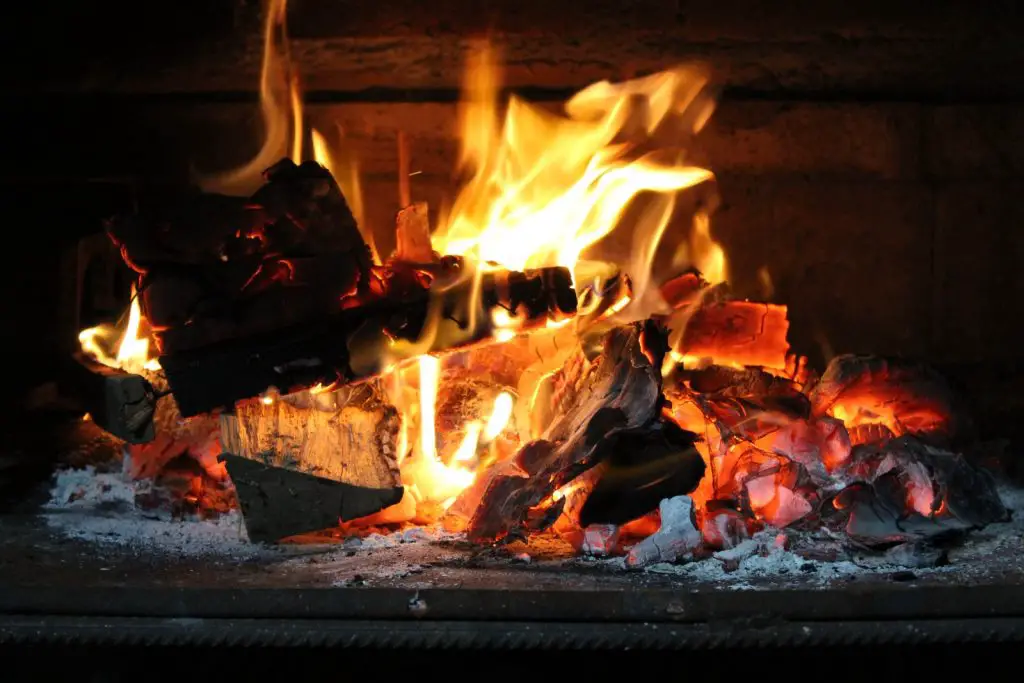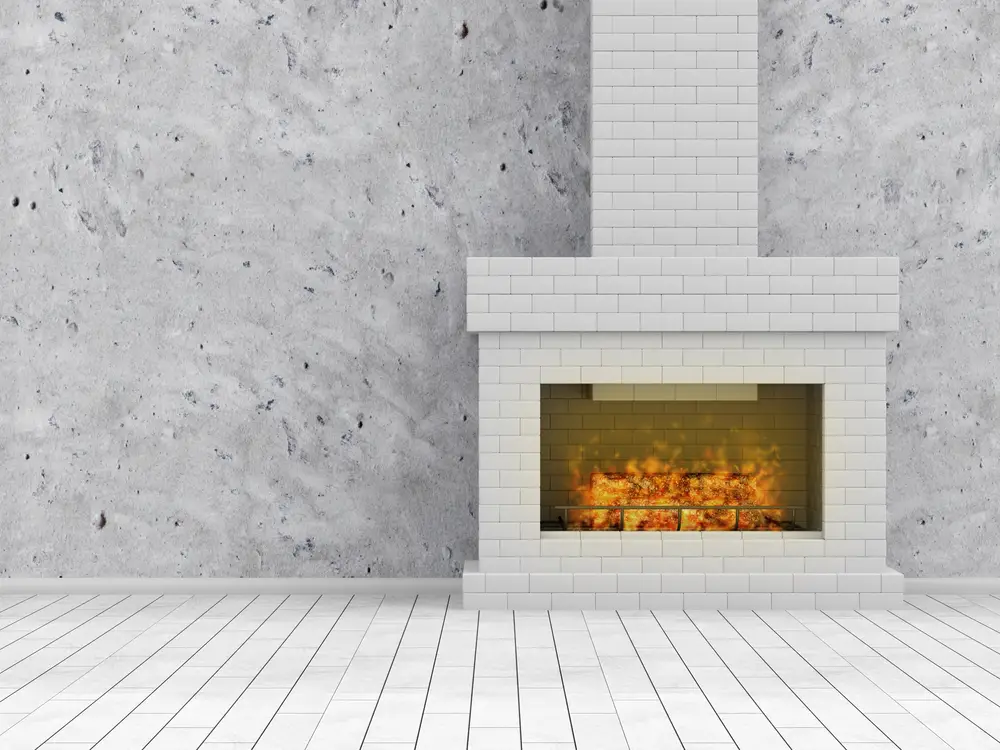Fireplace flues play an essential role in keeping the fire burning and the people around safe. They are vertical passages that allow smoke to escape.
Your fireplace flue needs to be open to create efficient fire while reducing smoke and carbon dioxide in the room. It is simply a channel in the chimney through which the smoke funnels through.
It is controlled by dampers, which are steel doors placed inside the flue. So how do you keep your flue open?
Contents
Why Are Fireplace Flues Important?
Before we talk about how to keep the flue open, let’s begin by discussing why chimney flues are crucial. They are needed to:
- Prevent Combustion When the Fire Burns
Flues act as a passageway for smoke and gasses. Note that when smoke and heat aren’t regulated, they can turn into a fire and catch combustible materials like drywall and wood studs. Unfortunately, this can lead to a house fire.
Flues have inner smooth surfaces that make it easy for smoke and gasses to travel upward. As such, preventing combustion.
- Protect Chimney Materials
Smoke from fire carries a lot of contaminants. Thankfully, a chimney flue made from clay and steel offers protection against acids, creosote, and other contaminants to the surrounding brick.
How Open Should a Flue Be?
The fireplace damper needs to be open all the time from when you’re lighting the fire throughout when it is burning. The flue damper should be wide open when opening the fireplace door. This will prevent smoke from escaping into the room.
If your wood burning fireplace has glass doors, ensure that they are fully open when starting a fire and fully closed when the fire is burning. Also, keep them closed when the fire begins to die down to reduce the room air going up the fireplace chimney.
What Happens When You Leave the Flue Open?

The fire continues to burn as long as the flue is open. As such, smoke and other contaminants will safely leave the chimney since that’s the purpose of a chimney flue. However, while the fire builds when the damper is open, leaving it fully open isn’t advisable as heated air can escape, which interferes with your fireplace operation.
Speaking of dampers and flues, we think it’s essential to state their differences. While some people use these words interchangeably, they are not the same. A damper is found inside a chimney’s flue. The flue is only a pathway for smoke when the fire burns. Dampers help control ventilation inside. That’s why you should ensure that yours comes with a handle or chain that allows you to open and close it.
How to Tell Whether Your Fireplace Flue Is Open or Closed

There are several ways you can tell whether yours is open or closed. For starters, you can create a small fire at the fireplace using paper. If it’s open, smoke won’t come out of your chimney. But if you see smoke, it’s probably because the flue is closed.
You can also conduct a visual inspection of your chimney. Open dampers or if you can see the sky indicate that it is open. However, if you’re unable to see the sky, the flue is probably closed and needs some unclogging.
The other method is to feel the breeze. Put your hand inside the fireplace and determine how the air flows. If it’s flowing down the chimney, the flue is open.
Lastly, you can also use damper controls. However, you have to know how they open the flue as this varies in different models. Some controls will open it when you rotate the knob clockwise or anti-clockwise while others will need you to push or pull the flue. Check the positions of these controls to know whether the flue is open or closed.
Why Should I Keep My Flue Open?
We’ve already mentioned that a flue provides a pathway for smoke and gasses when burning. So if it’s open, smoke will not escape into your house. As such, it will prevent unpleasant odors produced by smoke and keep your family members safe by reducing health risks and preventing combustion. Additionally, it makes your fireplace more efficient and helps retain heat in your home, thus making it more comfortable.
How to Open a Fireplace Flue?
Now that we know what a flue is and why it’s important, let’s talk about how to open it. Note that the method you use depends on the fireplace type you have and its construction.
Modern fireplaces usually have a handle inside the opening or above them. Turning the handle vertically opens the flue while turning it horizontally closes it. Often, the device has position markings. So it shouldn’t be hard to know how far you should turn it.
Also note that some fireplaces, especially those that are built-in need you to use a long metal pole with hooks at its end. Reach out of the chimney using this pole and pull down the damper doors lever to open the chimney flue.
There are also flue dampers made of stainless steel and cast iron, which you open by touching a specific button on the control system.
Again, bear in mind that the flue partially closes in some dampers once the first wood volatiles burns off. These usually come with magnetic thermometers that determine how to position the damper door.
How Do You Re-line Chimney Flues?
You can’t easily repair chimney flues once they are damaged. But, individuals can re-line them. Note that manufacturers use either flexible or rigid steel to make flue liners.
Rigid liners tend to conform to the chimney’s flue size. Thus, offer more space. However, installing them is a bit tricky as you need to assemble sections. If your flue extends more than 12 feet or there are any complications inside, opt for a flexible flue liner.
Summing Up
Flues play an essential role in your safety and the efficiency of the fireplace. As such, always ensure that yours is open by following the above steps. Make sure you choose the best fire starter or log lighter to get your hearth blazing!

